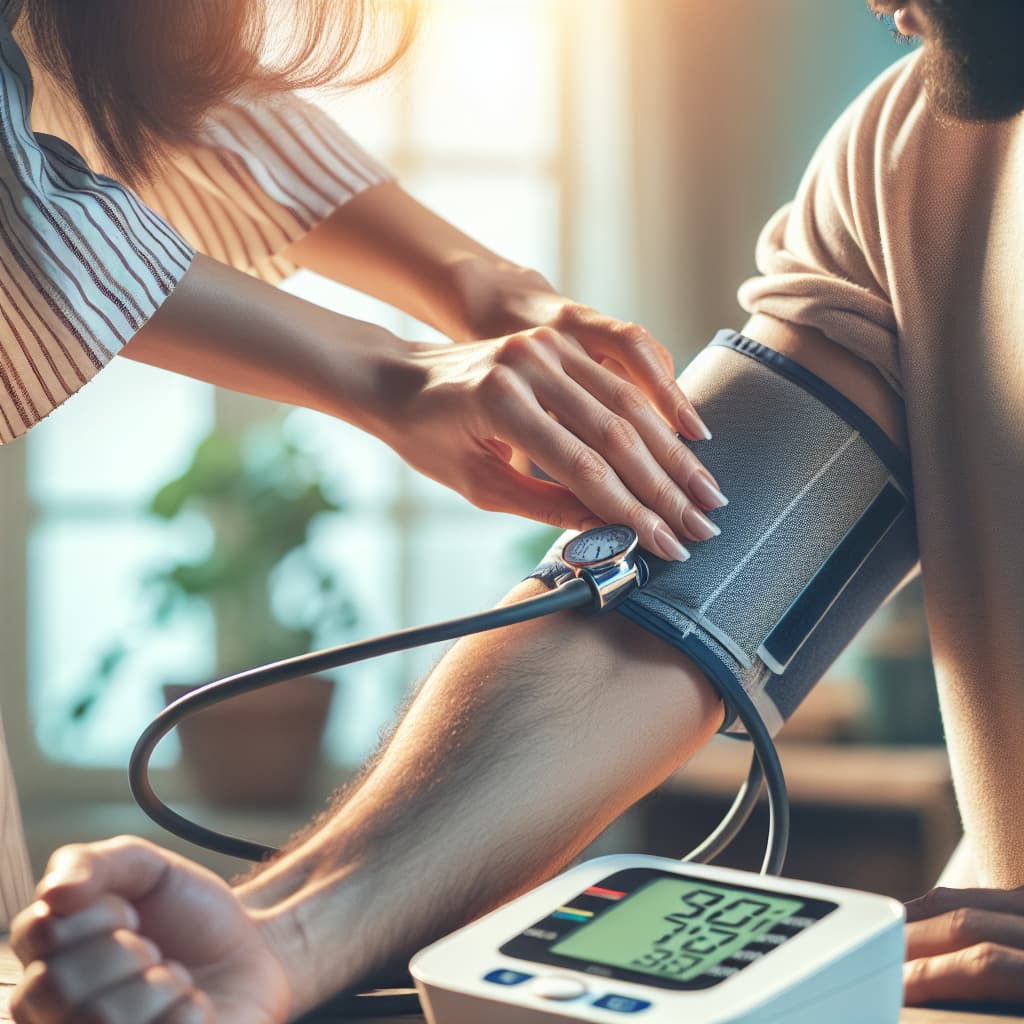High blood pressure, or hypertension, is a common health concern affecting nearly half of all adults in the United States. Regular monitoring of blood pressure is crucial for managing this condition and preventing potentially life-threatening complications. Home blood pressure monitoring (HBPM) has emerged as an effective tool for patients to take control of their health and provide valuable data to their healthcare providers.
Why Monitor Blood Pressure at Home?
Home blood pressure monitoring offers several advantages over traditional office-based measurements:
- More Accurate Readings: Home measurements often provide a more accurate representation of your blood pressure over time.
- Eliminates White Coat Hypertension: Some people experience elevated blood pressure in medical settings, leading to potentially inaccurate diagnoses.
- Improved Treatment Management: Regular home monitoring can help doctors adjust medications more effectively.
- Cost-Effective: HBPM can lead to significant healthcare cost savings in the long term.
- Reduced Cardiovascular Risk: Studies show that home monitoring can lead to better blood pressure control and fewer cardiovascular events.

Choosing the Right Blood Pressure Monitor
Selecting an appropriate device is crucial for accurate measurements:
- Type: The American Heart Association recommends automatic, cuff-style, upper arm monitors.
- Validation: Choose a monitor that has been validated by reputable organizations.
- Cuff Size: Ensure the cuff fits your arm properly for accurate readings.
- Features: Consider monitors with memory storage, multiple user profiles, or smartphone connectivity for easier tracking.
Avoid wrist or finger monitors, as they tend to be less reliable.
How to Measure Blood Pressure at Home
Follow these steps for accurate readings:
- Prepare: Rest for at least 5 minutes before measuring.
- Position: Sit with your back straight and supported, feet flat on the floor, and arm supported at heart level.
- Cuff Placement: Position the cuff about 2cm above your elbow.
- Stay Still: Remain quiet and still during the measurement.
- Multiple Readings: Take 2-3 readings, 1-2 minutes apart, and calculate the average.
- Consistency: Measure at the same time each day, preferably in the morning and evening.
Interpreting Your Results
Understanding your blood pressure readings is essential:
| Blood Pressure Category |
Systolic (mmHg) |
Diastolic (mmHg) |
| Normal |
<120 |
and <80 |
| Elevated |
120-129 |
and <80 |
| Hypertension Stage 1 |
130-139 |
or 80-89 |
| Hypertension Stage 2 |
≥140 |
or ≥90 |
| Hypertensive Crisis |
>180 |
and/or >120 |
If your readings consistently fall into the hypertension categories, consult your healthcare provider.
Benefits of Home Blood Pressure Monitoring
Research has shown that HBPM can lead to significant improvements in blood pressure control:
- Better Outcomes: Home monitoring is associated with a 3.9% reduction in systolic blood pressure and a 2.4% reduction in diastolic blood pressure compared to usual care.
- Reduced Cardiovascular Events: Expanding HBPM could potentially reduce myocardial infarction cases by 4.9% and stroke cases by 3.8% over 20 years.
- Cost Savings: HBPM adoption could lead to an average of 4.4% per person annual savings in healthcare costs.
Addressing Health Disparities
Home blood pressure monitoring has the potential to reduce healthcare disparities:
- Rural Residents: HBPM could lead to a greater reduction in cardiovascular events in rural areas compared to urban areas.
- Racial and Ethnic Minorities: Non-Hispanic Blacks may experience more averted cardiovascular events and greater cost savings with HBPM adoption.
Learn how to monitor your blood pressure at home with our guide. Discover techniques, benefits, and best practices for managing hypertension.
Tips for Successful Home Monitoring
- Consistency is Key: Measure your blood pressure at the same times each day.
- Keep a Log: Record your readings, including date, time, and any relevant factors (e.g., stress, medication changes).
- Share Data with Your Doctor: Bring your log to appointments or use digital tools to share data.
- Avoid Certain Factors: Don’t measure immediately after eating, drinking caffeine, smoking, or exercising.
- Maintain Your Device: Follow the manufacturer’s instructions for calibration and maintenance.

Challenges and Limitations
While HBPM offers numerous benefits, it’s important to be aware of potential challenges:
- Accuracy Concerns: Improper technique or faulty equipment can lead to inaccurate readings.
- Anxiety: Some individuals may experience increased anxiety from frequent monitoring.
- Overreliance: Home monitoring should complement, not replace, regular medical check-ups.
Conclusion
Home blood pressure monitoring is a valuable tool for managing hypertension and improving cardiovascular health. By providing more frequent and accurate data, HBPM empowers patients to take an active role in their health management while helping healthcare providers make more informed treatment decisions. As technology continues to advance, we can expect even more sophisticated and user-friendly home monitoring options to become available, further enhancing our ability to control blood pressure and reduce the risk of cardiovascular events.

